At face value, here's a woman lying on a bed, relaxing, smoking a cigarette, clothed, who has obviously just been reading a book. So what's the problem?
Let's have a look at other paintings of women who belong to this genre - the classic 'odalisque'. This was a common theme of the nineteenth century when tales of Arabian harems and exotic Eastern women provided plenty of scope for artists wishing to please their rich European male patrons.
Here's an odalisque by Ingres.
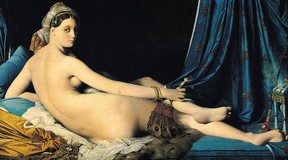 She's glancing round at her male visitor, her back is elongated into a graceful curve, her body is flawless, she holds a fan handle which hints at sexual pleasure. This lady, despite the classic pose and smooth beauty, is a working girl and hundreds of works of art on a similar theme were produced for rich clients under the pretence of Orientalism with a classical bent.
She's glancing round at her male visitor, her back is elongated into a graceful curve, her body is flawless, she holds a fan handle which hints at sexual pleasure. This lady, despite the classic pose and smooth beauty, is a working girl and hundreds of works of art on a similar theme were produced for rich clients under the pretence of Orientalism with a classical bent.
The mould was broken by Manet in his painting, Olympia:
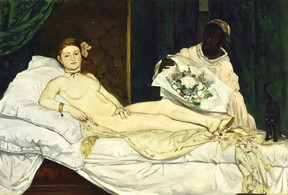 In this painting Manet's odalisque is also displayed on a couch. But she stares out at us (probably the male viewer) with a frank gaze. There is nothing seductive in the way her splayed hand covers her genitals and her body is pale and unhealthy looking. The maid has flowers from a client, in crumpled paper and the black cat on the right is angry and ready to spit. Needless to say, this painting caused an uproar at the time!
In this painting Manet's odalisque is also displayed on a couch. But she stares out at us (probably the male viewer) with a frank gaze. There is nothing seductive in the way her splayed hand covers her genitals and her body is pale and unhealthy looking. The maid has flowers from a client, in crumpled paper and the black cat on the right is angry and ready to spit. Needless to say, this painting caused an uproar at the time!
Later Picasso would push the boundaries even more in this work called Les Demoiselles d'Avignon.
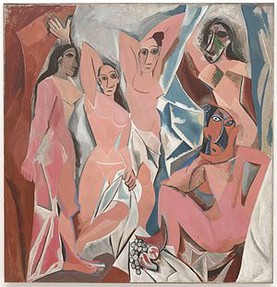
You couldn't get further from the classical odalisque than this painting by Picasso of prostitutes in a brothel. These images show women still as exotic, but they appear to be wearing primitive masks and their demeanour is threatening, their bodies fractured.
Again, this is another painting that divided the critics, and even Picasso's closest friends.


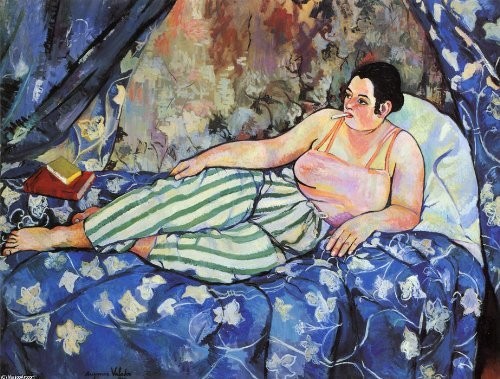
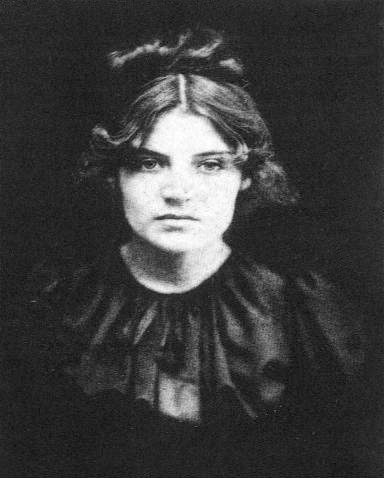
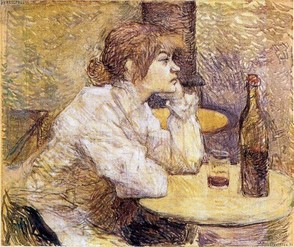
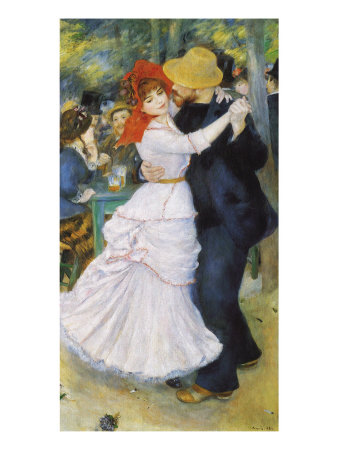
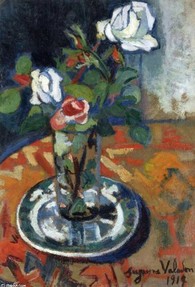
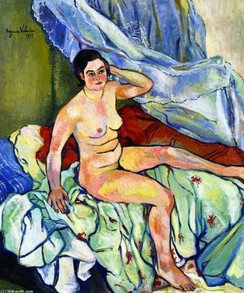
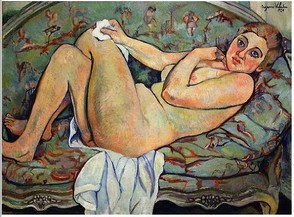
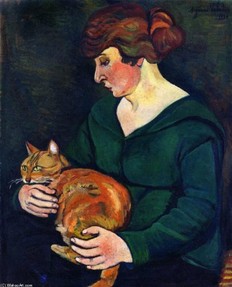 Of course Suzanne did not hate women. But It was quite true - she did not want to idealise them in her work. She knew only too well that most women did not idealise themselves - life was hard and women's bodies got worn down by work and childbirth. At the same time, women were sensual beings with needs and desires worthy of artistic recognition.
Of course Suzanne did not hate women. But It was quite true - she did not want to idealise them in her work. She knew only too well that most women did not idealise themselves - life was hard and women's bodies got worn down by work and childbirth. At the same time, women were sensual beings with needs and desires worthy of artistic recognition. 
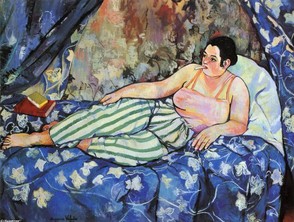
 She's glancing round at her male visitor, her back is elongated into a graceful curve, her body is flawless, she holds a fan handle which hints at sexual pleasure. This lady, despite the classic pose and smooth beauty, is a working girl and hundreds of works of art on a similar theme were produced for rich clients under the pretence of
She's glancing round at her male visitor, her back is elongated into a graceful curve, her body is flawless, she holds a fan handle which hints at sexual pleasure. This lady, despite the classic pose and smooth beauty, is a working girl and hundreds of works of art on a similar theme were produced for rich clients under the pretence of  In this painting Manet's odalisque is also displayed on a couch. But she stares out at us (probably the male viewer) with a frank gaze. There is nothing seductive in the way her splayed hand covers her genitals and her body is pale and unhealthy looking. The maid has flowers from a client, in crumpled paper and the black cat on the right is angry and ready to spit. Needless to say, this painting caused an uproar at the time!
In this painting Manet's odalisque is also displayed on a couch. But she stares out at us (probably the male viewer) with a frank gaze. There is nothing seductive in the way her splayed hand covers her genitals and her body is pale and unhealthy looking. The maid has flowers from a client, in crumpled paper and the black cat on the right is angry and ready to spit. Needless to say, this painting caused an uproar at the time!



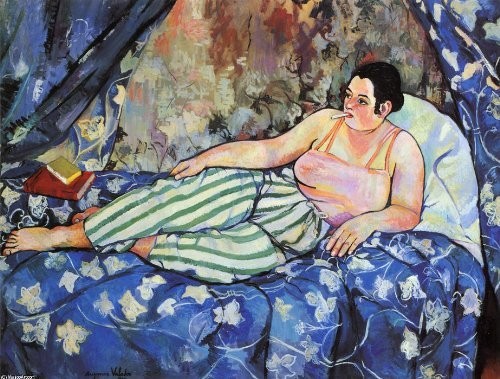
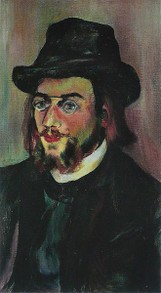
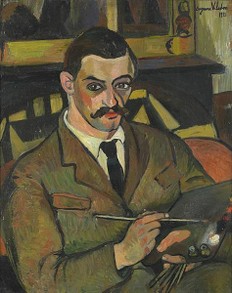
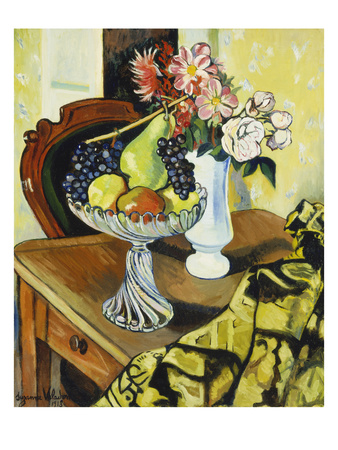



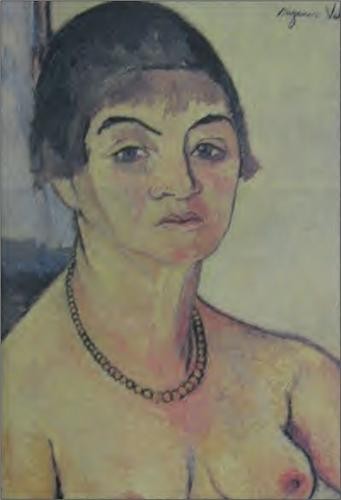
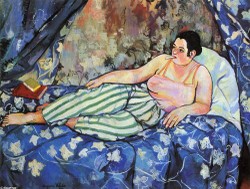

 How to Choose a Walking Cane or Stickon 08/01/2014
How to Choose a Walking Cane or Stickon 08/01/2014
 Michael Miller Fabulous Fabric Swatches for Quilting, Crafts etcon 07/02/2014
Michael Miller Fabulous Fabric Swatches for Quilting, Crafts etcon 07/02/2014
 The Drama of Life in the Rock Poolon 06/08/2014
The Drama of Life in the Rock Poolon 06/08/2014
 The Flâneur - Symbol of Modernity in 19th Century Parison 05/09/2014
The Flâneur - Symbol of Modernity in 19th Century Parison 05/09/2014

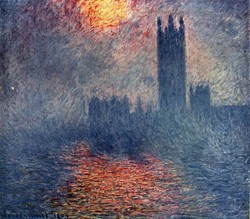
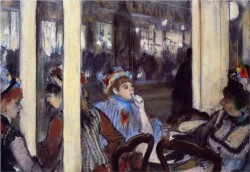
Comments
I enjoyed this post. Thank you, Jo
Hello Kari - Thank you for your comment and I am so glad you have found Valadon interesting. I can see the similarities between the Phtoshopped debate!
This is a nice article. I had never heard of her before, but I really admire what I know of her now. I can't help but think this parallels the natural model versus the Photoshopped model current debate.
Good to hear! :)
Hello again Mira! Thanks so much for the encouragement. I will try and do more! :)
Wow. What a nice read! I missed it at the time. Glad I saw it in the sidebar of your latest article on art. Keep them coming!:):)
My pleasure Elias - so glad you enjoyed the article.
Never heard of her before but I really liked her paintings. Thanks for introducing her to us Kathleen :)
Wow Katie -I do so agree! I love Suzanne! She had guts! And she lived life to the full - as well as being very talented. Thanks for your comment :)
I love art, Suzanne Valadon's work screams a real moment in time of real life, the art respects and portrays the human condition and form in it's purest form without the slightest edit or influence of anything other than what is actually before the artist. Talk about capturing real life in it's natural form. Great tribute to great art. Much Appreciated! :)K